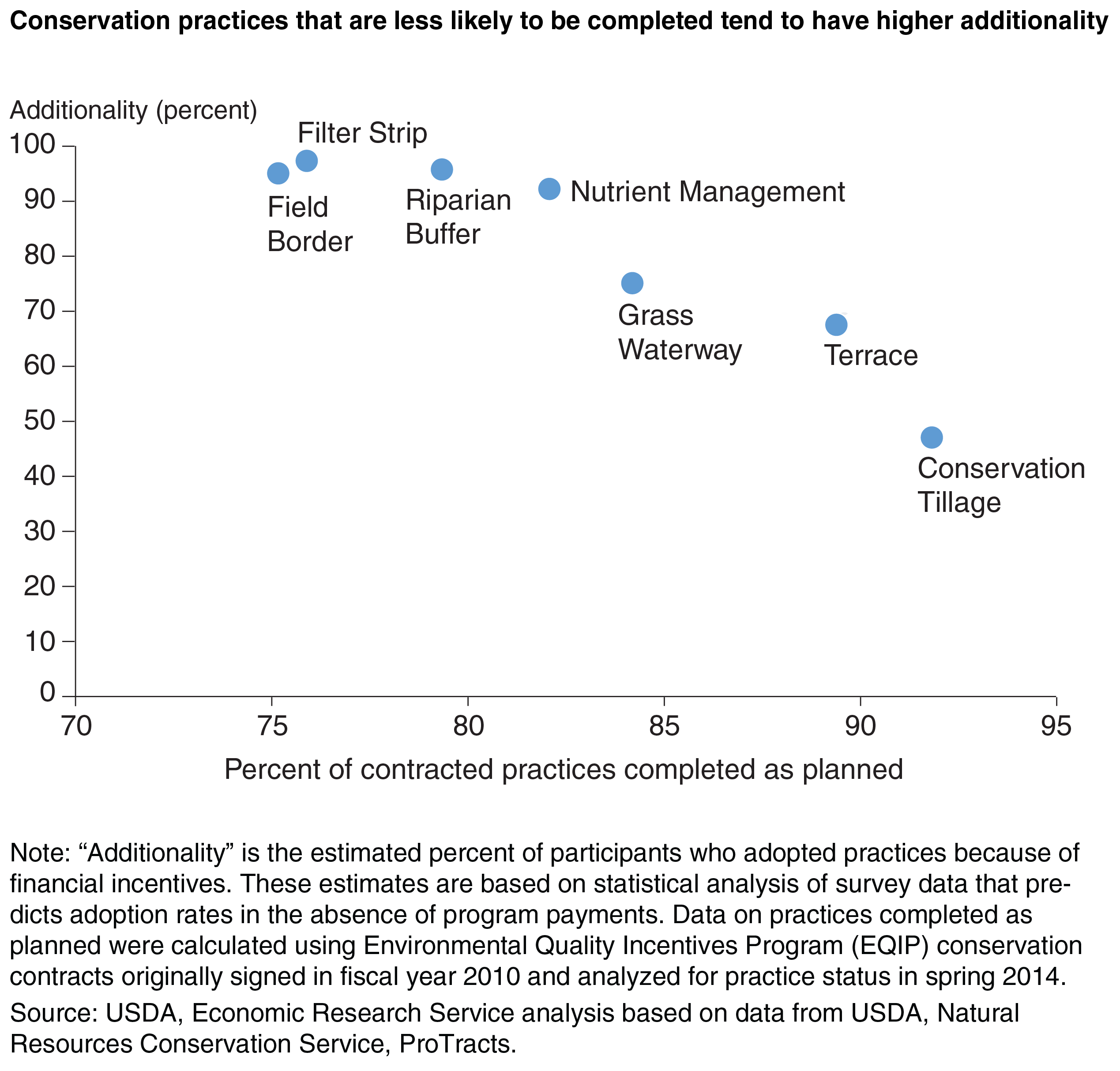Conservation Practices With Greater Benefits to Farmers and Ranchers Have Higher EQIP Completion Rates
- by Steven Wallander and Roger Claassen
- 6/3/2019
USDA working lands programs provide improved environmental quality by sharing the costs of conservation practices with the farmers and ranchers who participate. In the Environmental Quality Incentives Program (EQIP), farmers and ranchers sign contracts to implement selected practices on specific areas of their operations. After the practices are completed, the participants receive financial assistance payments. Sometimes practices are not completed as planned, and the financial assistance is reallocated to other practices or other contracts. Although the large majority of practices are completed as planned under the original contracts, there are differences in completion rates across types of practices.
For any given conservation practice, some farmers and ranchers do not need incentives because adopting the practice provides enough on-farm, private benefits to justify its costs. In contrast, other farmers and ranchers are willing to adopt the practice only with financial assistance. In general, a mix of both types participate in conservation programs.
How do we know whether the program is enrolling participants who are adopting a practice because of the financial assistance? “Additionality” is a statistical estimate of the proportion of program participants who are in the second group—those willing to adopt a given practice only with financial assistance. Prior research based on an analysis of survey data found that some practices, such as field borders and riparian buffers, have high additionality, while other practices, such as conservation tillage, have low additionality.
Recent ERS research found that practices that are less likely to be completed tend to have higher additionality. This relationship is a bit counterintuitive. For example, field borders and filter strips—planted buffers that capture sediment and nutrient runoff as they leave the field—have very high additionality and completion rates of about 75 percent. In contrast, conservation tillage, which involves planting a crop through or amidst the prior crop’s residue and can save farmers fuel and labor costs, has very low additionality with a completion rate of 92 percent. This tradeoff between additionality and completion rates occurs because on-farm, private net benefits are an important driver of program outcomes. When a practice has a large share of program participants receiving high private benefits, there is both a larger share of participants who would have adopted without the financial assistance (i.e., lower additionality) and higher share of participants willing to complete the practice (i.e., higher completion rates).
An important implication of this research is that program managers who want to increase the additionality of financial assistance payments may want to focus conservation efforts on practices that have lower completion rates.
On June 26, 2019, the title of this Amber Waves article was changed to “Conservation Practices With Greater Benefits to Farmers and Ranchers Have Higher EQIP Completion Rates” to more accurately reflect the content of the finding.
This article is drawn from:
- Wallander, S., Claassen, R., Hill, A. & Fooks, J.R. (2019). Working Lands Conservation Contract Modifications: Patterns in Dropped Practices. U.S. Department of Agriculture, Economic Research Service. ERR-262.
You may also like:
- Claassen, R., Horowitz, J., Duquette, E. & Ueda, K. (2014). Additionality in U.S. Agricultural Conservation and Regulatory Offset Programs. U.S. Department of Agriculture, Economic Research Service. ERR-170.


